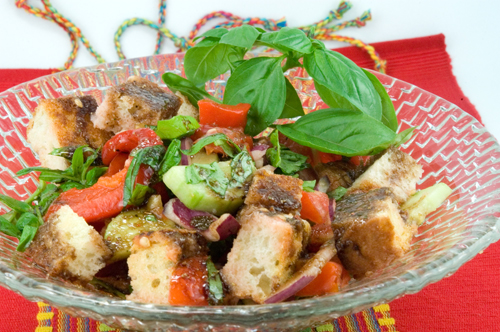
Marie Antoine Careme is regarded as the leader of what is called la grande cuisine Francaise. That is, the classic French style of cooking heavy on sauces, heavy on creams, heavy on decoration, heavy on everything. Careme had an impressive resume. At various times he was chef de cuisine to Czar Alexander I and the Rothschilds. But his recipes are daunting. Most are difficult to emulate, even in a modern kitchen. Case in point are his famous chartreuse dishes such as Chartreuse printuniere (Sping Chartreuse), Chartreuse à la parisienne, en surprise, and Chartruese de perdreaux, which he called “the queen of all entrees.” These were molded dishes using an assortment of vegetables, fowl, wild game, sausages, and a host of other stuff. His Paris Chartreuse even has truffles, pullets, fillets, forcemeat (meat mixture with fat), and lobster tail all baked in a cylindrical mold.
I took one look at these recipe and said, No way. It would take forever to do one of these things. But you have to give credit to the man. His list of classic French dishes is exhaustive. With such works as L’art de la cuisine au dix-neuvième siècle (The Art of the Kitchen at the XIX Century) and Le mâitre d’hôtel francais (The Mâitre d’ of the French Hotel) he not only discussed garnishes and accessories, but also took on such topics as the provisioning and organization of the kitchen. All that said, I did manage to find one recipe which I can identify with. And which under the circumstances, is not that difficult to make. So, kiddies, here’s your chance to create something on the grande mode of classical cuisine. This will surely impress family and friends. You’ll become the Julia Child of your set. The recipe is Rice Cake Glazed and Ornamented. I give it exactly as noted by Monsieur Careme.
RICE CAKE, GLAZED AND ORNAMENTED
Put 8 ounces of rice, boiled as usual, with the addition of a clove of vanilla, in a semi-globular mold, buttered; then turn it on a dish, and when cold, mask it all over with transparent apricot-marmalade. Decorate the top and the sides, according to your fancy, with pistachios, angelica, currants, verjus grapes, and preserved cherries. Serve it up, either hot or cold.
Yield: about 4 servings
Note: Verjus grapes are unripe, green grapes. You can substitute seedless green grapes if convenient.
Caption: courtesy of exclassics













